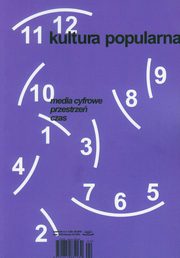The media, i.e. ...? The notion of the media with regard to Polish territories before WWI
The media, i.e. ...? The notion of the media with regard to Polish territories before WWI
Author(s): Mirosław FiliciakSubject(s): Social Sciences, Cultural history, Media studies, Regional Geography, Communication studies, Social differentiation, Sociology of Culture, Sociology of the arts, business, education, Economic development, Pre-WW I & WW I (1900 -1919), Film / Cinema / Cinematography, Sociology of Politics, Sociology of Art
Published by: Szkoła Wyższa Psychologii Społecznej
Summary/Abstract: The questions under consideration concerning the expansive nature of the category of a medium (but also the analytical reasons for this consideration) depend on the reflection on local modernities, the search for the elements which may have had something in common with the processes taking place in the world centres of cultural modernisation, and the local discontinuities. I am well aware of the exaggerated claims I decided to include in this text. Perhaps such provocations may bring us closer to a better understanding of the specific natures of local modernisations, which were taking place in a different social and economic context, with limited resources in both an economic and a cultural sense (concerning the competences of the audience). e category of transmediality may be viewed in a similar way. The primary meaning of this term may be used in two ways, despite the fact that, according to both Jenkins and Freeman, it is related to the top -down planning and devising of the strategies of big businesses and countries (Freeman argues that the final phase of the development of analogue transmedia emerged from the 56 government propaganda). Firstly, transmediality may be treated as an indicator of development (here perhaps conceived of as ‘keeping up’ with the cultural centre). In this view, it will be another way of analysing culture, about which Antonina Kłoskowska wrote that ‘despite using the mass media, the culture was still not -so -mass’ (2006:418). In Poland, it was not until after WWI that it became possible to cross the second threshold of entry into mass culture i.e. not only using the mass media, but also developing sizeable institutions which could be identified with the developed industries of culture. For this reason the first transmedia attempts in Poland can be found in the late 1960s and 1970s and include such titles as Czterej pancerni i pies (Four tank -men and a dog; apart from the book and television series there were also comic strips in press, fully -Dedged comics, and even fan clubs), Stawka większa niż życie (Stakes Larger than Life; television series and comics, but also television plays), or the series of crime stories, television episodes and comics 07 zgłoś się (07 Come In).
Journal: Kultura Popularna
- Issue Year: 47/2016
- Issue No: 01
- Page Range: 40-57
- Page Count: 18
- Language: English

